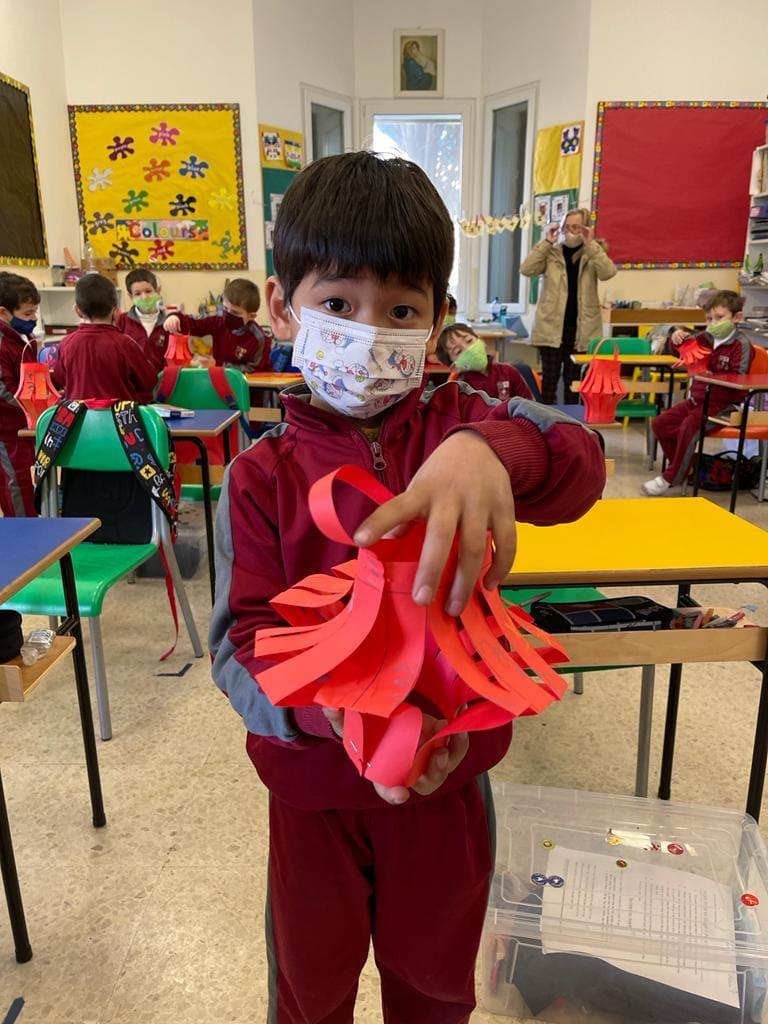St Edward's College Malta: Celebrating the Year of the Tiger
Published Lynne on Wednesday, February 16, 2022 12:00 AM

This is the year of the Water-Tiger:
On the First of February, our Chinese students at St Edward’s College, Malta, celebrated Chinese New Year with lanterns, bookmarks, fortune cookies and many other activities. Tigers have a very special place in Chinese culture, given that China has been the home and origin of many different species of this majestic creature.
The Chinese Lunar calendar is based around two systems: the 'heavenly' stems and the 'earthly' branches. The earthly branches are comprised of 12 zodiac signs, each represented by an animal, which you've probably heard of. They are the rat, ox, tiger, rabbit, dragon, snake, horse, goat, monkey, rooster, dog and pig. This year is number nine, which represents water. It's combined with the third zodiac sign, the tiger, which gives us a water tiger. The last water tiger year was in 1962.
The tiger is considered the king of all animals in Chinese mythology and culture. As a Zodiac sign, it symbolises power, courage, confidence, leadership and strength.
It's also known to be an animal that expels all evil. In terms of the Tiger Year, it's associated with vitality and strength.
At St Edward’s College we encourage this sort of cultural sharing and debate. The uniqueness of each civilization shows also a unique trend in humanity: the need to celebrate together. Unity in diversity is a concept which is dear to the College and celebrating Chinese New year is one such occasion.
A Cultural Experience
This week I had the honour of participating in the excitement surrounding Chinese New Year, otherwise known as The Spring Festival, with my Year 9 TEFL students. Our roles were reversed as I was taught all about the many customs involved in this celebration through their colourful and engaging presentations. Below the boys have asked me to share what they feel are some of they are most important traditions of this festival.
The History of the Spring Festival
The history of The Spring Festival is always the most controversial topic, as there are two opposing beliefs about the origin of the festival. One is the story of Yin and Shang, and the other is of the monster ‘Year’.
During the Yin and Shang Period people celebrate the ‘Li Chung’ by worshipping the god they believe is in the sky. And as time went by this developed into the celebration of the New Year agricultural harvest. The Han Dynasty formed the ‘Chinese New Year Etiquette’ and began to set off fireworks, know as burning bamboo. ‘Li Chung’ is also known as The Spring Festival.
Another belief is that The Spring festival developed in response to a monster called ‘Year’. Many years ago, there was a monster who came out every year to destroy nature and buildings and to fill his tummy with humans. The people could not stop him, so every year at this time they would hide underground to avoid being eaten. Until one day a wise old man figured out that the monster was afraid of loud cracking noises and the colour red. From then on
instead of hiding they would fight back with firecrackers and red couplets on the doors, window grilles and on each window and wait until the Year monster arrived. When he arrived, they set off firecrackers and wore red clothes to scare him off. It worked! And so Chinese New Year was born.
Food
The Chinese have a talent for cooking delicious food and different regions have different styles of dishes. In the north, they have a special desire for food which is simple but suits their temperament. A favourite dish in Beijing is a hotpot with dumplings. The climate of the north has made this special food a tradition. Meanwhile in the south people prefer more delicate dishes and sumptuous delicacies. These stem from the abundance of resources in the south and its natives’ deep hearts. Whichever part of China you are from the sharing of your favourite dishes is an important way of spending time with your relatives.
Decorations
Decorations are also a big part of Chinese New Year. We put a lot of paper lanterns on the streetlights or in the trees. We also string corn together and hang it on the door. We have many other decorations for this festival including the Chinese knot and the Spring festival couplets which are placed on the window grilles. These couplets are a pair of poetry lines used to give good wishes and blessings to the community.
Customs
One of the best-known customs of the Chinese New Year is its association with the colour red. The colour red represents family and togetherness, and it is used in many decorations. The red packets are a favourite tradition for young people, as they are given these with gifts of money inside from their older relatives. Something that cannot be missed at Chinese New year is the many firecrackers and fireworks that are used to celebrate, although in recent years these have stopped due to the pollution they create.
Previous Article Promote Your School Next Article



